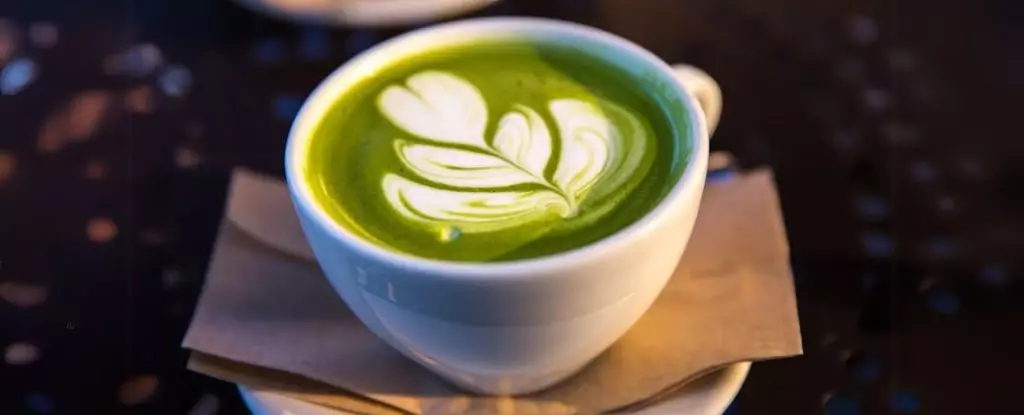Nestled in the heart of East Asian culture, matcha is more than just a beverage; it embodies centuries of tradition and a unique cultivation process that distinguishes it from the common green tea and the robust morning coffee. The secret lies in its cultivation—matcha is shade-grown, a meticulous practice that allows the tea leaves to flourish without direct sunlight. This technique enhances the plant’s chlorophyll content, contributing to its vivid green color. When the leaves are harvested, they are meticulously processed into a fine powder, a method that grants matcha its rich flavor and higher concentration of beneficial compounds.
Historically, matcha’s journey began in China before it crossed over to Japan in the 12th century, courtesy of Buddhist monks. These monks recognized the potent properties of matcha, utilizing it as a cornerstone of their meditation rituals. Over the years, matcha evolved beyond its monastic roots, becoming integral to Japan’s tea culture and formal ceremonies, celebrated not just for its flavor but also for its spiritual significance.
The Nutritional Powerhouse
What truly sets matcha apart in the realm of health is its nutritional profile. While both matcha and regular green tea originate from the Camellia sinensis plant and share similar health benefits, matcha offers a more potent punch due to the whole leaf consumption. Rich in polyphenols, notably flavonoids, matcha has garnered attention for its antioxidant properties. Antioxidants play a crucial role in combating oxidative stress, and they are linked to reducing the risk of various diseases, including heart disease and some types of cancer.
Moreover, the potential health claims surrounding matcha are vast and compelling. Preliminary research suggests that it may have antimicrobial and anti-inflammatory properties, potentially aiding in weight management and brain health. However, it’s crucial to approach these claims with a discerning eye, as much of the existing evidence is derived from lab-based studies rather than conclusive human clinical trials. While the outlook is promising, the path to definitive understanding requires further exploration.
Understanding Matcha’s Caffeine Content
Caffeine is another significant consideration in matcha consumption. With caffeine levels notably higher than regular green tea but lower than coffee, matcha delivers a gentle energy boost. Caffeine, when consumed in moderation, can enhance mood, cognition, and even metabolic rate. However, it’s essential to remain cautious about excessive intake, which can lead to feelings of anxiety or restlessness. The delicate balance of caffeine intake underscores the importance of personalized choices based on individual tolerance levels.
When comparing matcha to its more popular counterpart, coffee, both beverages emerge as healthful choices laden with antioxidants and cardiovascular benefits. Yet, research on coffee’s effects is richer and more definitive. The general consensus indicates that three to four cups of coffee daily is a safe limit for many. However, with matcha, a more conservative approach is advised—one to three cups appears to be the sweet spot, aligning with its unique polyphenolic profile.
Gastronomic Implications: Iron Absorption and Tolerance
It is essential to consider how these beverages affect nutrient absorption, particularly iron. Both matcha and coffee contain tannins and polyphenols that may inhibit iron absorption from plant-based foods. For those who follow a vegetarian or vegan diet, or for individuals predisposed to iron deficiency, timing the consumption of matcha or coffee around mealtimes becomes vital—largely because drinking these beverages immediately before or after meals could exacerbate iron absorption issues.
Additionally, sensitivity to acidity presents another layer of complexity. Both beverages can be mildly acidic and may provoke digestive discomfort in sensitive individuals. However, matcha boasts a gentle touch due to L-theanine, an amino acid that promotes calmness and helps alleviate caffeine-induced jitters. This characteristic can make matcha a more suitable option for individuals who experience anxiety or prefer a smoother experience over the rollercoaster often associated with coffee consumption.
Matcha vs. Coffee: The Personal Preference Dilemma
Ultimately, whether one opts for matcha or coffee transcends mere preference; it is a reflection of lifestyle and health considerations. For those who embrace caffeine without reservations, coffee may offer the stronger jolt and clearer research backing its benefits. Contrarily, matcha stands out as a healthier, less jittery alternative, appealing to those who seek a balance of energy and tranquility while enjoying a cup.
Each beverage provides a spectrum of health benefits, but moderation remains paramount in any dietary regime. Enjoying either matcha or coffee mindfully can enrich daily routines. As modern consumers look for healthier choices, matcha emerges as a vibrant option that respects both tradition and contemporary health wisdom, inviting individuals to engage with their well-being in a deliciously meaningful way.


Leave a Reply